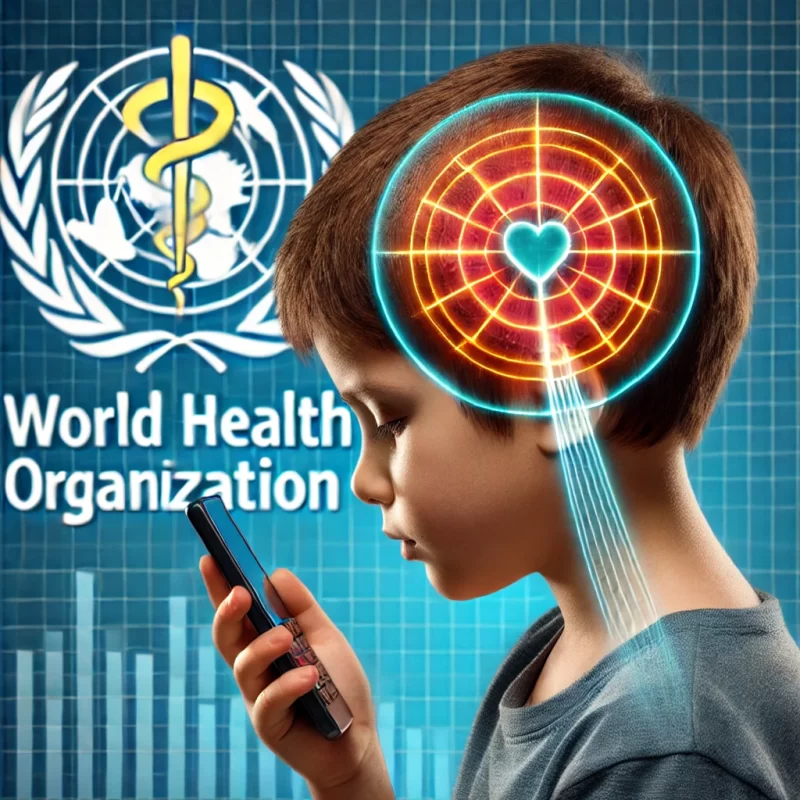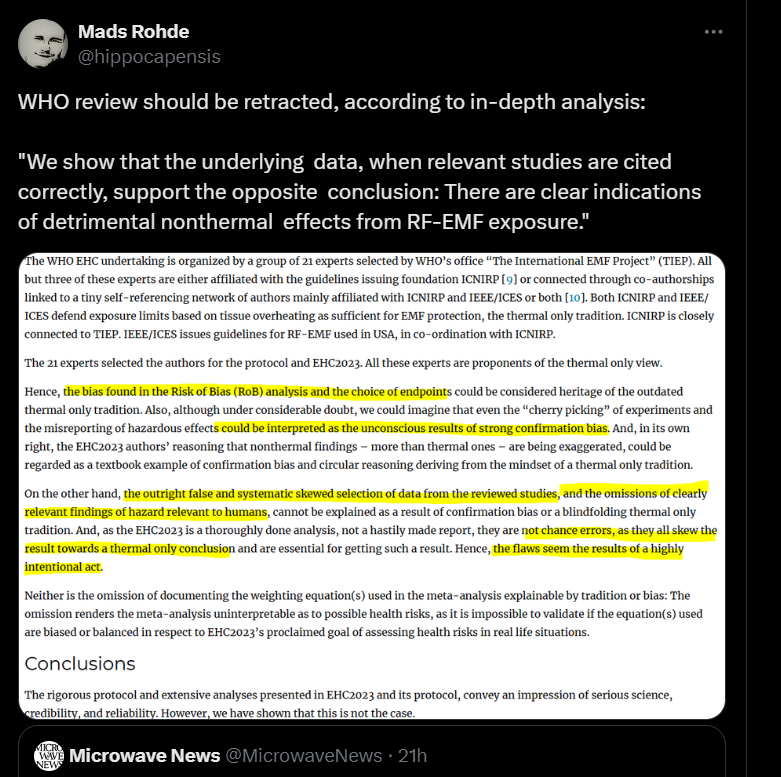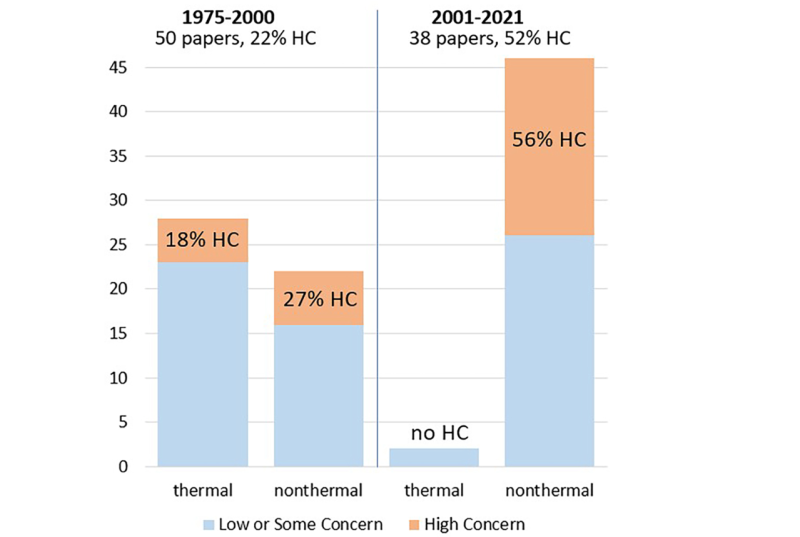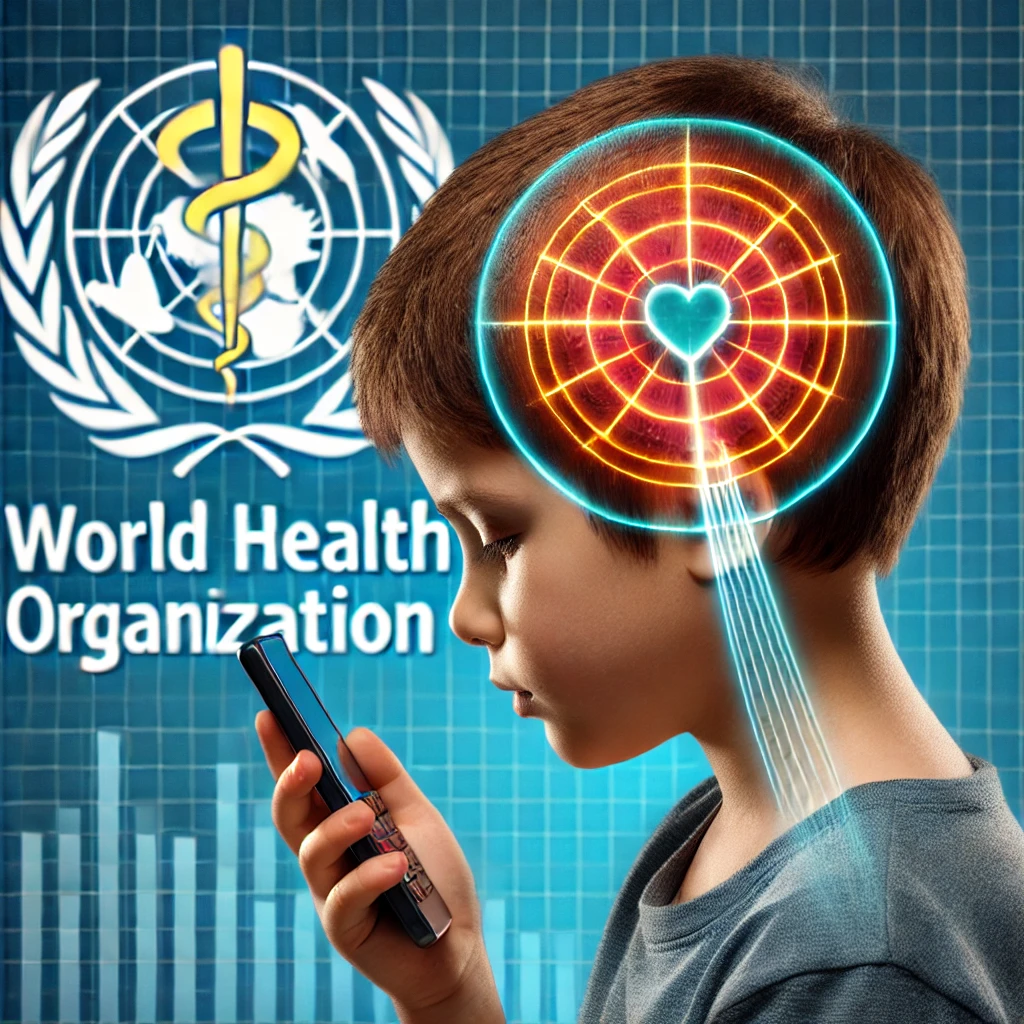
As the ubiquity of cell phones continues to grow, particularly among children, concerns over their safety have intensified. Emerging research indicates potential health risks associated with radiofrequency electromagnetic fields (RF-EMF) emitted by these devices. Despite widespread usage, recent critiques suggest that the World Health Organization (WHO) has significantly understated these risks, potentially delaying necessary regulatory updates and public health interventions. This article delves into these alarming findings and emphasizes the urgent need to protect our children from potential harm.
The Flawed WHO Review
The WHO initiated a series of systematic reviews to assess the health implications of RF-EMF, with one focusing on non-human mammals’ pregnancy and birth outcomes. The review concluded that the data did not provide clear evidence to inform regulatory decision-making. However, critics like Else K. Nordhagen and Einar Flydal argue that this conclusion is unsupported and contradicted by the data, which indicate significant nonthermal effects from RF-EMF exposure. Key issues identified include the exclusion of relevant studies, misuse of statistical methods, and errors in data interpretation, all contributing to a misleading conclusion that no conclusive evidence exists for nonthermal effects.
WHO to build neglect of RF-EMF exposure hazards on flawed EHC reviews? Case study demonstrates how “no hazards” conclusion is drawn from data showing hazards

Consequences of Misinformation
The potential health risks of nonthermal RF-EMF exposure are particularly concerning for children, who are more susceptible due to their developing tissues and longer lifetime exposure. The WHO’s inconclusive findings on these risks may hinder the advancement of protective measures and regulatory updates designed to safeguard public health. Research, including major studies like the Interphone study, Hardell group studies, CERENAT study, U.S. National Toxicology Program (NTP), Ramazzini Institute Study, REFLEX Project, BioInitiative Report, and the work of researchers like Dr. Henry Lai, collectively point towards increased health risks from RF-EMF and suggest the need for caution in dismissing these potential risks.
Proposed Mechanisms of Harm
- Oxidative Stress: RF-EMF can lead to the production of reactive oxygen species (ROS), causing oxidative stress that damages cellular structures, including DNA, proteins, and lipids.
- Calcium Ion Efflux: RF-EMF may disrupt calcium ion channels in cell membranes, affecting cellular functions such as signal transduction and neurotransmitter release.
- Gene Expression and DNA Damage: Studies have shown changes in gene expression and DNA damage at exposure levels that do not produce significant heating, suggesting RF-EMF interacts with cellular processes in ways not yet fully understood.
- Blood-Brain Barrier (BBB) Permeability: RF-EMF may increase BBB permeability, allowing toxins and pathogens to enter the brain more easily, potentially leading to neurological disorders.
- Epigenetic Changes: Exposure to RF-EMF has been linked to changes in DNA methylation patterns and histone modification, which can alter gene expression without changing the underlying DNA sequence, potentially having long-term health effects.
Debate Over Biological Effects of Non-Ionizing Radiation
The debate over the biological effects of non-ionizing radiation, such as RF radiation, is significant. The U.S. Military’s RadioBio Initiative challenges the traditional view that non-ionizing radiation’s only significant effect is thermal (heating). Emerging research suggests non-thermal effects on biological systems, including changes in DNA methylation patterns and gene expression, challenging the longstanding belief that non-ionizing radiation is only harmful through heating.
Scientific Literature on EMF Exposure
New research links non-ionizing RF radiation from wireless devices to neurological harm, both prenatally and postnatally. Studies suggest that using devices like Wi-Fi, cell phones, tablets, and laptops can potentially damage nerve cells in the hippocampus and other areas of the brain. For instance, a 2021 study found a correlation between higher brain exposure to RF-EMF and lower non-verbal intelligence. Another study in 2020 found an association between increased screen-based media use and lower microstructural integrity of brain white matter tracts in preschool-aged children.
Nervous System Effects
The brain and nervous system are highly sensitive to microwave RF radiation, which can cause problems such as damage to parts of the brain important for learning and memory, changes in mood, and issues with nerve cell protection. Children and young adults (up to age 26) are most vulnerable due to rapid brain development.
Reproductive Health Effects
Studies have examined the potential effects of non-ionizing radiation on male reproductive health, particularly concerning sperm quality. A 2018 study concluded that RF-EMF might induce oxidative stress, leading to infertility. Similarly, a 2017 meta-analysis reported a significant decline in sperm counts among men from various regions.
Possible Carcinogen
The International Agency for Research on Cancer (IARC) classified RF-EMF radiation as a Group 2B possible human carcinogen. Researchers are pushing for this classification to be upgraded to a Group 1 known carcinogen.
Biological Mechanisms
DNA and RNA are crucial molecules that direct inheritance, fetal development, metabolism, protein synthesis, immune system functioning, nervous system functioning, and cancer protection. Several studies have found that RF radiation can damage DNA and RNA through various mechanisms, including the creation of reactive oxygen species (ROS). The U.S. National Toxicology Program (NTP) and the Ramazzini Institute Study have both found significant evidence of carcinogenic activity.
Current Research and Regulatory Challenges
The U.S. National Toxicology Program (NTP) identified clear evidence of cancer related to cell phone radiation. However, despite these alarming results, the NTP has ceased further research on the biological and environmental impacts of cell phone RF radiation, citing funding constraints and technological challenges. This decision represents a significant abdication of responsibility, leaving the public vulnerable to potential health risks from long-term, non-thermal exposure levels that current guidelines do not adequately address.
Further complicating the regulatory landscape, the U.S. Court of Appeals for the District of Columbia Circuit found that the Federal Communications Commission (FCC) had failed to adequately respond to evidence suggesting harm from wireless radiation, terming their decision to retain outdated safety limits as “arbitrary and capricious.”
Call to Action
Given these findings and regulatory gaps, there is a pressing need for public advocacy to demand more rigorous, transparent, and unbiased research into the health effects of cell phone radiation. It is crucial for the public to engage with regulatory bodies, urging them to revise safety standards based on the latest scientific data. Protect your children by being aware of the potential risks and advocating for stricter regulations and more comprehensive research.
Conclusion
The journey to fully understanding and mitigating the risks associated with cell phone radiation is fraught with scientific, regulatory, and institutional challenges. However, the stakes are too high to rely on outdated conclusions that may understate real risks. Only through informed public advocacy and rigorous scientific inquiry can we ensure that health regulations are adequate to protect us, especially our children, in an increasingly wireless world.
A summary of our findings is presented in Figure 1: we see that of the total papers reviewed, the majority is published before 2001 (50 vs. 38 papers). Of papers published 1975–2000, 22 % were rated High Concern for Risk of Bias (HC), while 52 % of the newer studies (2001–2021) are rated HC. We also see that the newer papers are almost all nonthermal, and as much as more than half of them are rated (HC), while for older studies, published before 2001, a majority of the papers are thermal, and that more nonthermal than thermal are rated HC.









